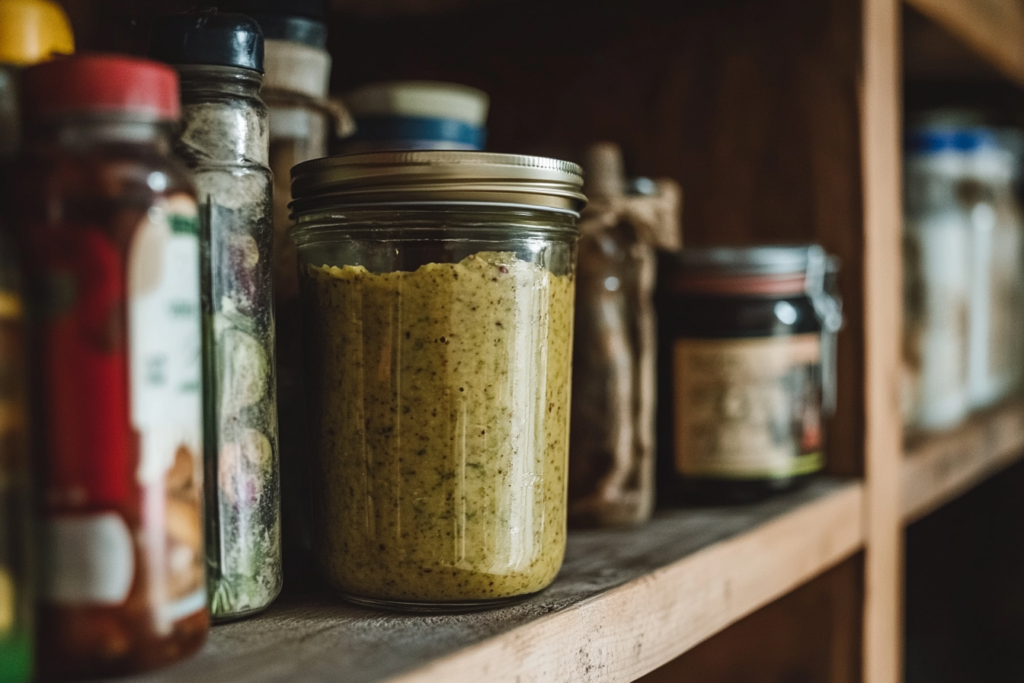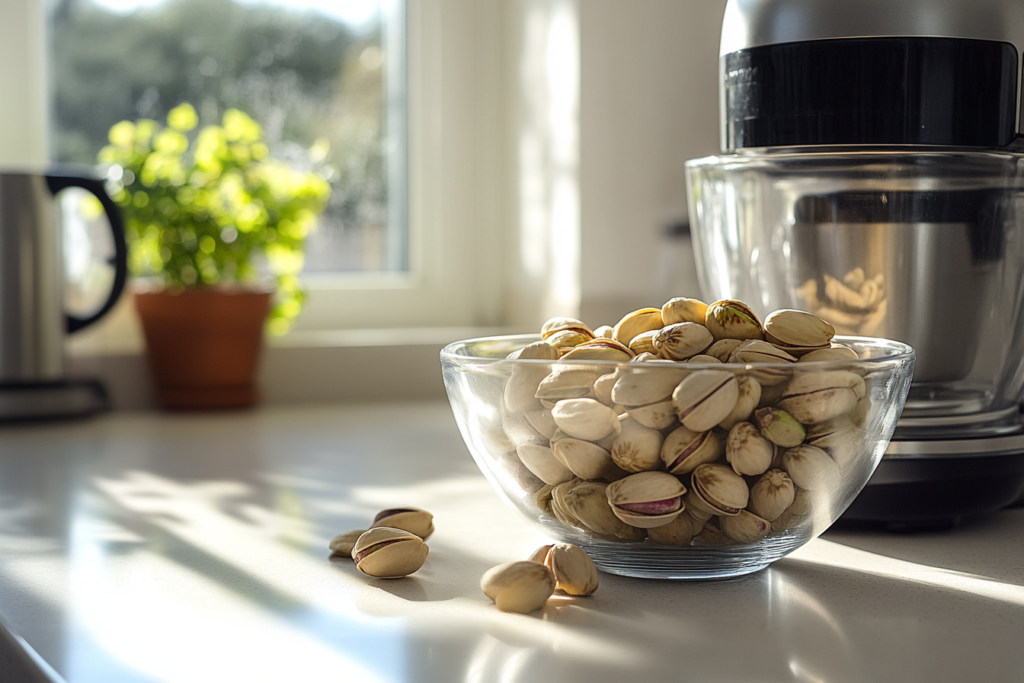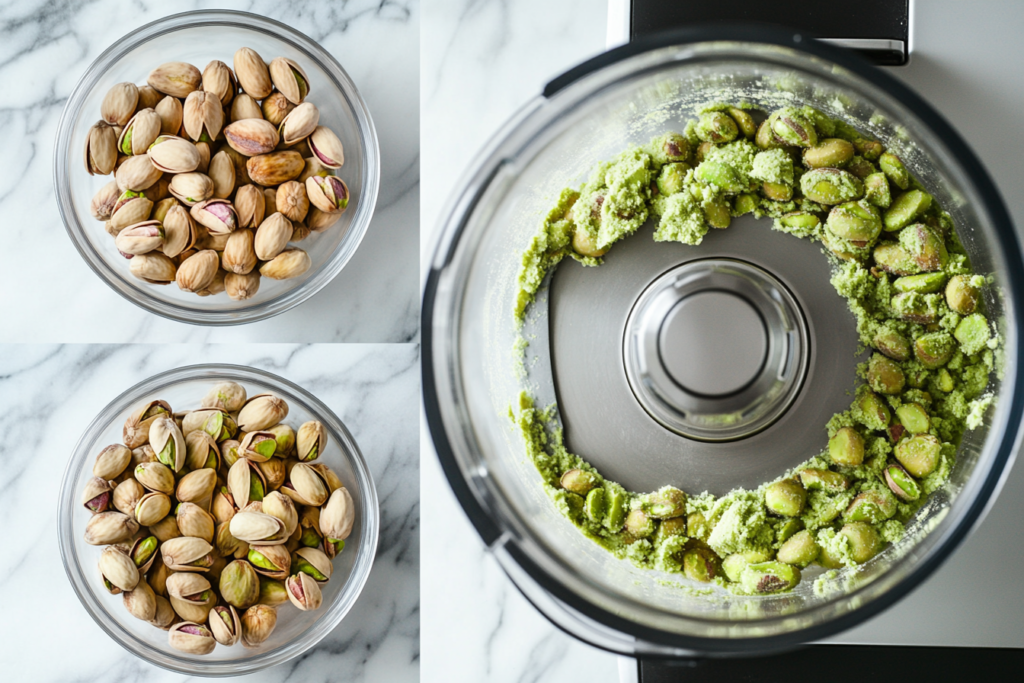Ever wandered down the grocery aisle and been stopped in your tracks by the price of pistachio butter? It’s enough to make you do a double-take! Compared to peanut or even almond butter, it often carries a hefty price tag. You might wonder, “What makes this nutty spread so darn expensive?” Well, you’re not alone in asking that question. I’m here to break it down for you, exploring all the factors that contribute to the premium price of this delicious treat. We’ll delve into everything from the growing process of pistachios to the manufacturing of the butter itself. So, grab a cup of tea, settle in, and let’s uncover the mystery behind the price of pistachio butter.
The Allure of Pistachio Butter: A Nutty Delight
Before we dive into the cost, let’s take a moment to appreciate what makes pistachio butter so special. It’s not just another nut butter; it’s a unique culinary experience.
A Flavor Profile: What Makes Pistachio Butter Special?
Have you ever tasted a really good pistachio? That distinct, slightly sweet, almost floral flavor is what makes pistachio butter so irresistible. It’s not as earthy as peanut butter, not as subtly sweet as cashew butter, and not as intensely almondy as almond butter. It’s truly in a league of its own. Imagine a smooth, creamy texture with that signature pistachio taste – it’s a little bit nutty, a little bit sweet, and a whole lot delicious. It’s like a gourmet treat in a jar.
Nutritional Powerhouse: The Health Benefits of Pistachio Butter
Beyond its delicious taste, pistachio butter packs a nutritional punch. It’s a good source of healthy fats, protein, and fiber, which are all essential for a balanced diet. It also contains vitamins and minerals like vitamin B6, copper, and manganese. Think of it as a tasty way to get some extra nutrients into your day. Unlike some other spreads that are loaded with added sugars and oils, pure pistachio butter offers a more natural and wholesome option. It’s a win-win: delicious and nutritious!
Nutrition Facts, Ingredients and Quantities (per 1 tablespoon serving, approximate)
| Nutrient | Amount (Approximate) |
|---|---|
| Calories | 100 |
| Total Fat | 8g |
| Saturated Fat | 1g |
| Cholesterol | 0mg |
| Sodium | 0-50mg (depending on added salt) |
| Total Carbohydrate | 3g |
| Dietary Fiber | 1g |
| Total Sugars | 1g |
| Protein | 3g |
| Vitamin B6 | 10% DV |
| Copper | 15% DV |
| Manganese | 20% DV |
Ingredients:
- Shelled Pistachios (100%)
- Optional: Pinch of Salt
The Key Factors Driving Up Pistachio Butter Prices
Now, let’s get down to the real question: why the high price? There are several key factors that contribute to the cost of pistachio butter, starting with the nuts themselves.
The Cost of Pistachios: A Foundation for Price
The price of pistachios themselves is a major factor in the final cost of the butter. Pistachios are not the easiest nuts to grow, and that difficulty translates to a higher price per pound.
Limited Supply and High Demand of Pistachios
Unlike peanuts, which are grown in abundance, pistachios are cultivated in fewer regions around the world. This limited supply, combined with a growing global demand, naturally drives up prices. It’s simple economics: when something is scarce and desirable, it becomes more expensive. Think of it like a limited-edition collectible – the fewer there are, the more they cost.
Growing Conditions and Vulnerability to Pests & Diseases
Pistachio trees have very specific growing requirements. They need hot, dry summers and cool winters to thrive. This means they can only be grown in certain climates, further limiting their supply. They are also susceptible to various pests and diseases, which can significantly impact crop yields. If a crop is damaged by pests or disease, the supply goes down, and the price goes up. It’s like if your garden was suddenly attacked by bugs – you’d have fewer vegetables, and they’d become more precious!
The Labor-Intensive Harvesting and Processing of Pistachios
Harvesting and processing pistachios is a labor-intensive process, adding another layer to the cost.
Hand-Picking and Sorting for Quality
While some larger farms use mechanical harvesting methods, many pistachios are still hand-picked to ensure quality. This is a time-consuming process that requires a lot of manpower. After harvesting, the nuts need to be sorted to remove any damaged or immature ones. This meticulous sorting further adds to the labor costs. It’s not like picking apples from a tree; it requires careful attention to detail.
Shelling and Processing Challenges
Pistachios have a tough outer shell that needs to be removed before they can be eaten or processed into butter. While machines can help with this process, it’s still an extra step that adds to the overall cost. Think of it like shelling nuts for a holiday pie – it takes time and effort!
Manufacturing Pistachio Butter: An Added Layer of Cost
Once the pistachios are harvested, shelled, and sorted, the process of turning them into smooth, creamy butter begins. This manufacturing process adds another layer of cost to the final product.
Specialized Equipment and Production Processes
Making nut butter isn’t as simple as just throwing some nuts in a blender. It requires specialized equipment designed to grind the nuts to a very fine consistency, creating that smooth, spreadable texture we all love. This equipment can be expensive to purchase and maintain, which contributes to the overall production cost. It’s like having a high-end kitchen appliance – it does a great job, but it comes with a price tag.
Quality Control and Packaging Expenses
Maintaining consistent quality is crucial for any food product, especially one with a premium price. Pistachio butter manufacturers invest in strict quality control measures to ensure that every jar meets their standards. This includes testing for things like texture, flavor, and freshness. Then there’s the packaging: durable jars or containers that protect the butter and maintain its freshness. All of these factors add to the final cost. Imagine buying a nice perfume – the fancy bottle adds to the overall price, right? It’s the same principle.
Common Problems and Solutions Related to Pistachio Butter
Like any natural food product, pistachio butter can sometimes present a few minor issues. But don’t worry, there are usually easy fixes!
Oil Separation: Understanding and Fixing It
One of the most common issues you might encounter with natural nut butters, including pistachio butter, is oil separation. You open the jar, and there’s a layer of oil sitting on top. This is perfectly normal!
Natural Oil Separation vs. Added Oils
This separation happens because the natural oils in the nuts separate from the solids over time. It’s a sign that your butter doesn’t contain added emulsifiers or stabilizers. Some cheaper brands add these to prevent separation, but they can also affect the taste and nutritional value. So, seeing a little oil separation is actually a good sign!
Simple Solutions for Reincorporating Oil
Fixing oil separation is super easy. Just give the butter a good stir! Use a knife or a spoon to thoroughly mix the oil back into the solids until you have a smooth, consistent texture. You might need to stir it a few times, especially when you first open the jar. After that, storing it properly can help minimize future separation.
Preventing Rancidity and Extending Shelf Life
Because pistachio butter contains healthy fats, it can eventually go rancid if not stored properly. Rancid butter has an unpleasant smell and taste, so proper storage is key.
Proper Storage Techniques: Cool, Dark, and Airtight

The best way to store pistachio butter is in a cool, dark place, like your pantry or a kitchen cabinet. Avoid storing it in direct sunlight or near heat sources, as this can accelerate the rancidity process. Make sure the jar is tightly sealed after each use to prevent air from getting in. Air exposure can also contribute to rancidity. Think of it like storing olive oil – you want to keep it away from light and heat.
The Role of Preservatives (and Avoiding Unnecessary Additives)
Some brands add preservatives to extend the shelf life of their nut butters. While preservatives can be effective, some people prefer to avoid them. Look for brands that use minimal ingredients and avoid unnecessary additives. Freshly made pistachio butter, stored properly, will have a good shelf life without needing a lot of extra ingredients.
Finding Affordable Pistachio Butter Options
While pistachio butter is generally more expensive than other nut butters, there are ways to find more affordable options.
Exploring Smaller Brands and Local Producers
Consider checking out smaller brands or local producers. They might offer competitive prices compared to larger, well-known brands. Farmers’ markets and local specialty food stores are great places to discover these hidden gems. It’s like finding a great deal at a local boutique versus a big department store.
Considering Bulk Purchases and Online Retailers
Buying in bulk can often save you money in the long run. If you use pistachio butter frequently, consider buying a larger jar or multiple jars at once. Online retailers can also offer competitive prices and wider selections. Just be sure to check shipping costs and read reviews before purchasing.
Pistachio Butter vs. Other Nut Butters: A Cost Comparison
Let’s put the price of pistachio butter into perspective by comparing it to other popular nut butters.
Almond Butter: A More Affordable Alternative?
Almond butter is often seen as a middle-ground option in terms of price. While it’s generally more expensive than peanut butter, it’s usually more affordable than pistachio butter. Almonds are grown more widely than pistachios, which contributes to their lower cost.
Cashew Butter: A Middle-Ground Option?
Cashew butter can also be a good alternative if you’re looking for something a bit more budget-friendly. It has a mild, slightly sweet flavor that’s quite versatile. It often falls somewhere between almond and pistachio butter in terms of price.
Peanut Butter: The Budget-Friendly Classic
Peanut butter remains the most affordable nut butter on the market. Peanuts are grown in abundance, and the production process is relatively simple, which keeps costs down. However, the flavor profile is quite different from pistachio butter.
Is the Price Justified? The Value Proposition of Pistachio Butter
Considering the higher price, is pistachio butter really worth it? Let’s consider its unique qualities.
The Unique Flavor and Culinary Versatility
Pistachio butter’s distinct flavor sets it apart from other nut butters. It adds a touch of gourmet flair to anything you use it in, from toast and sandwiches to baked goods and sauces. Its unique flavor profile makes it a worthwhile splurge for those seeking a special culinary experience. It’s not just a spread; it’s an ingredient that can elevate your dishes.
The Nutritional Benefits Compared to Other Spreads
While all nut butters offer nutritional benefits, pistachio butter boasts its own unique profile. It’s a good source of antioxidants, and it has a favorable fatty acid profile. When you consider the nutritional value alongside the unique flavor, the price becomes more justifiable.
Making Your Own Pistachio Butter: A DIY Approach
If the cost of store-bought pistachio butter is a major concern, you can always try making your own! It’s easier than you might think.
The Ingredients and Equipment You’ll Need

You’ll need shelled pistachios (raw or roasted), a food processor or high-powered blender, and a pinch of salt (optional). That’s it!
Step-by-Step Instructions and Tips for Success
- If using raw pistachios, you can roast them in the oven at 350°F (175°C) for about 10-15 minutes, until they’re lightly toasted and fragrant. This enhances their flavor.
- Add the pistachios to your food processor or blender.
- Process the nuts, scraping down the sides as needed. At first, they’ll turn into a coarse meal, then gradually into a smoother butter. This can take several minutes, so be patient!
- Add a pinch of salt to taste, if desired.
- Continue processing until you reach your desired consistency.

Making your own pistachio butter gives you control over the ingredients and can be a more cost-effective option, especially if you buy pistachios in bulk.
When exploring the luxury of pistachio butter, you might enjoy comparing it to the versatility of other breakfast spreads. Check out the Ultimate Guide to Pistachio Butter to dive deeper into its unique characteristics and creative uses.
If you are interested in nutty breakfast recipes, why not complement pistachio butter with something classic? Try this Easy Chorizo and Eggs Recipe for a bold and satisfying morning meal.
Looking to pair pistachio butter with something unexpected? Consider the Baked Scrambled Eggs Recipe for a wholesome, creamy dish that harmonizes with nutty flavors.
And for those with a sweet tooth, pistachio butter could add a twist to Southern delights. Explore the Simple Chocolate Gravy Recipe Delight for a unique breakfast treat that pairs beautifully with rich spreads.
Conclusion: Appreciating the Premium of Pistachio Butter
So, why is pistachio butter so expensive? As we’ve explored, it’s a combination of factors, from the limited supply and demanding growing conditions of pistachios to the labor-intensive harvesting and processing methods, not to mention the manufacturing and quality control involved in making the butter itself. While the price might seem high at first glance, understanding the journey from pistachio tree to jar helps us appreciate the premium. It’s a unique, flavorful, and nutritious treat that’s worth considering, even if it’s just for an occasional indulgence.
FAQs About Pistachio Butter
You might still have a few lingering questions about pistachio butter. Let’s clear those up.
Why is pistachio butter expensive?
Pistachio butter is costly due to the high price of raw pistachios, labor-intensive farming, specialized processing, and premium branding. Limited supply and sustainability efforts also contribute to its price.
Is pistachio butter good for you?
Yes, pistachio butter is packed with healthy fats, protein, and essential nutrients like Vitamin B6 and potassium. It’s a nutritious option for heart health, muscle maintenance, and overall well-being.
Why are nut butters so expensive?
Nut butters are expensive because of the cost of raw nuts, processing, and packaging. Premium varieties often use high-quality ingredients without fillers, further increasing their price.
Why is pistachio so expensive?
Pistachios are expensive due to their specific growing conditions, long maturation period, water requirements, and limited global production. Harvest challenges and high demand also drive up their price.

